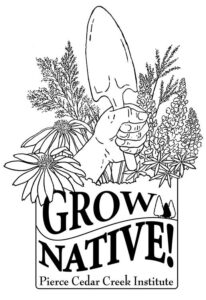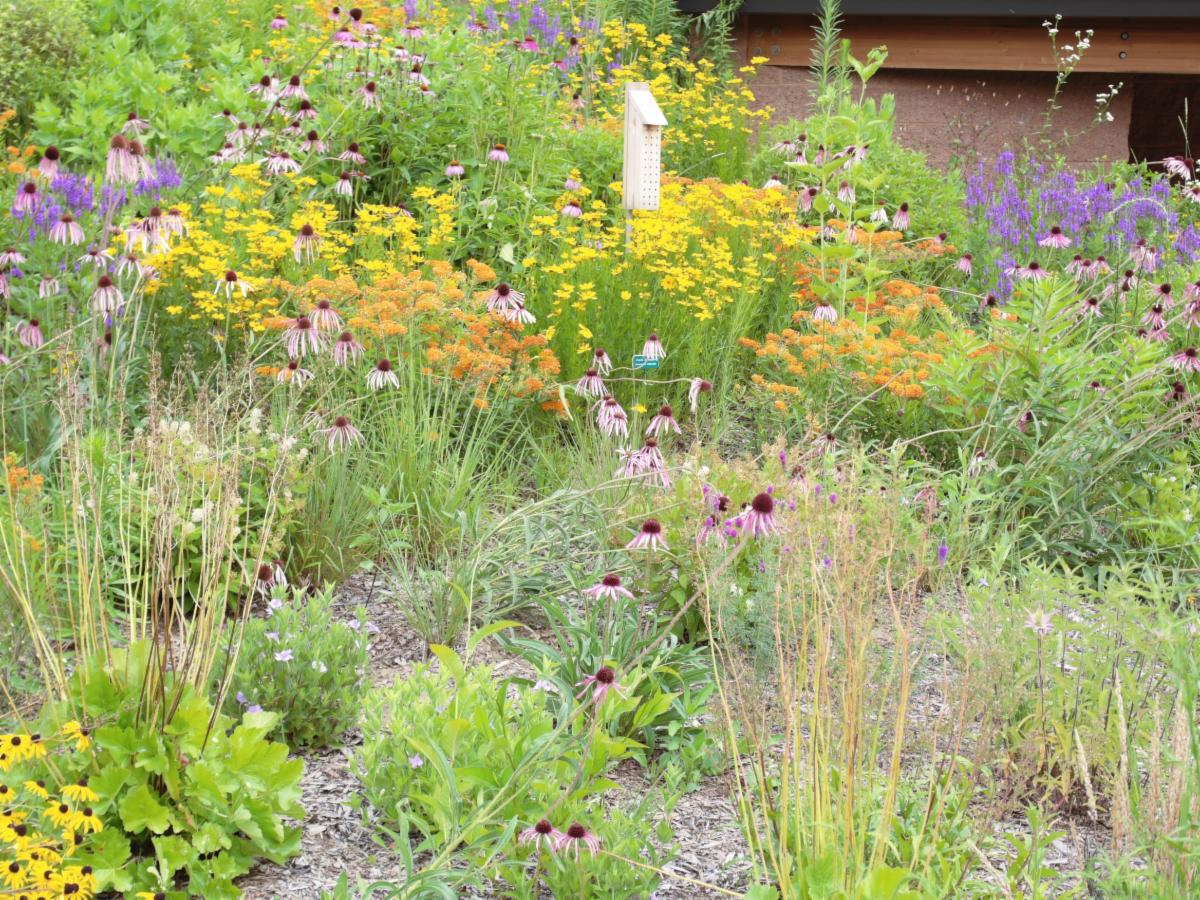What Is Pierce Cedar Creek Institute?
Pierce Cedar Creek Institute is a nature center, environmental education center, and biological field station located on 850 acres with almost ten miles of hiking trails. It is nearly ten miles south of Hastings, Michigan. The Institute's mission is to inspire appreciation and stewardship of our environment. The Institute's Stewardship Team is now offering property consultations and guidance on project management to private landowners and agencies.
What Is A Native Plant?
Native plants are plants that have grown and evolved in a region for thousands of years. Often these plants have formed complex relationships in their home natural communities and serve as habitat for wildlife and other organisms. In contrast, a non-native plant is one that has been introduced to a new region, and an invasive plant is one that does or is likely to cause economic or environmental harm (US DOI 2006). Not all non-native plants are invasive. Examples of native plants in Michigan are bee balm (Monarda didyma), milkweed (Asclepias sp.), black-eyed Susan (Rudbeckia hirta), and purplecone flower (Echinacea purpurea).
Why Grow Native Plants?
Native plants provide a myriad of benefits to you, your community, the economy, and the biodiversity of your region. Below are some of those benefits.
Increases biodiversity
Native plants attract a variety of birds, insects, and other wildlife by providing food and diverse habitat. Plants are one of the most important features of an animal’s habitat, because they often provide most, or even all the animal’s habitat needs. Native plants provide nectar for pollinators including hummingbirds, bees, butterflies, moths, and bats, as well as nuts, seeds, and fruits for other wildlife.
Requires less water and other inputs
Native plants have adapted to regional soils and weather conditions making them equipped to survive periods of drought and excess water. The deep, fibrous root of many native plants increase the soil's capacity to store water, which can significantly reduce water runoff, and, consequently, flooding. The native plants also are highly efficient at reducing soil erosion, recycling nutrients, and storing carbon.
Reduces pollution
According to the U.S. Environmental Protection Agency (EPA), gas-powered garden tools emit 5% of the nation’s air pollution. Just one hour operating a gas-powered lawn mower emits the same amount of air pollution as driving a car 45 miles and up to 95 decibels of noise pollution. The EPA also estimates that over 17 million gallons of gasoline is spilled while refueling lawn equipment potentially contributing to water pollution. Native plants not only sequester, or remove, carbon from the air from the burning of fossil fuels but also do so quietly.
Saves money and time
The cumulative cost of maintaining a native prairie or wetland over a 20-year period totals $3,000 per acre in contrast to $20,000 per acre for non-native turf grasses, according to a study by Applied Ecology Services (in Brodhead, Wisconsin). Non-native plants require a larger quantity of water and are more susceptible to drought, harsh winters, insect damage, and pathogens, resulting in higher water bills, more pesticides and fertilizer applications, and replacement costs.
How Do I Care For My Native Plants?
At a minimum, you can mow your native garden once a year, or leave standing stems and stalks for winter wildlife habitat. For a more curated look, you may maintain the area as you would any other garden, cutting back growth in the fall and weeding out plants that grow in undesirable places. For a larger prairie-like planting, check out the following resource from Prairie Moon Nursery.

Buy Native Plants

Here is a list of local vendors and organizations that sell native plants. Some organizations have annual plant sales, while vendors sell plant materials year-round.

Barry County Operation Pollination
Operation Pollination is a worldwide effort led by Rotary International to increase pollinators' declining populations. Efforts are focused on expanding and improving native habitats on public and private lands and educating community members about the critical role pollinators play in the environment. This initiative was adopted in Barry County in 2022, led by the Hasting Rotary Club but truly a community effort involving a diverse group of individuals and organizations.
Plots for Pollinators is a specific pollination project designed to encourage individuals and organizations to increase their support of pollinators by enhancing, expanding, or adding new native plantings to their yards or downtown Hastings. For a $10 fee, a Plots for Pollinators sign is provided to each registered garden or city plot to encourage others to install their own Plots for Pollinators. Signs must be picked up at the Hastings Public Library located at 227 E. State Street in Hastings.
For more information, contact Michelle Skedgell at mskedgell@cedarcreekinstitute.org.
